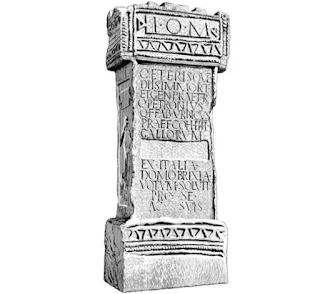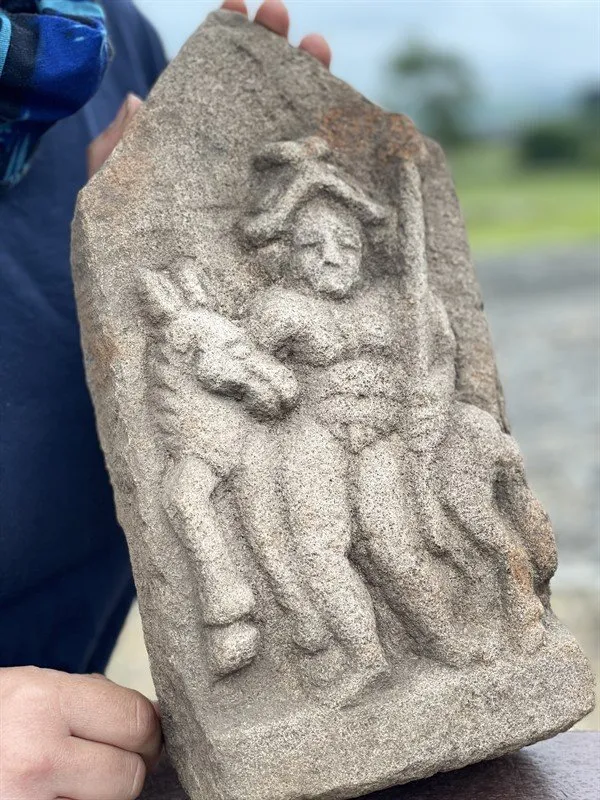The text on the Vindolanda tablet on Hadrian's Wall
The text on the Vindolanda
tablet on Hadrian's Wall
Vindolanda Fort predates Hadrian's Wall one of the oldest in northern Britain dating back to the 1st century BC. A Roman fort set amid the barren and beautiful scenery of Northumberland Vindolanda which means "white fields" in Latin, was a Roman fort in what is now Northumberland. The fort was situated south of Hadrian's Wall with the fortifications at Housesteads about two miles to the north. Amid the remains of walls roads and foundations the line of Hadrian's Wall amid the ruins of Vindolanda in the past
Soldiers quarters warehouses inns Roman civilization and the land of the ancient tribes the residence and storage of food for the Roman army the fortress of Vindolanda, built on top of a stone dating back to the 3rd century. This place consists of 9 fortresses, in just over 20 years from various tribes the destruction of the invaders by fire rebellion against Rome and local druids the fortress of Emperor Hadrian in the Roman period,the fortress area is suitable for building a fortress until later Hadrian's Wall was built in the north and has been renovated many times. There are excavations of personal messages of Roman soldiers, letters, documents on wood, things have been preserved, making Vindolanda Fortress one of the most important and valuable evidences of the Roman era in the 1st century.
Vindolanda (Chesterholm) Hadrian's Wall / image : visitnorthumberland
The Romans had previously conquered southern Britain and attempted to conquer Scotland but failed. Hadrian's Wall built around 122 AD, slightly to the north replaced the Antonine Wall built decades later but Vindolanda remained occupied during Roman times. The early wooden fortifications of 122-14 AD were replaced by the construction of the Hadrianian stone fortifications. Some of the interior buildings have been rebuilt in the northern part of the Praetorium. Many objects made of iron and copper alloys have been found. Pottery has been found. The building was altered several times and remained in use until around 400 AD serving as accommodation for civilian workers under the control of the garrison. Two military buildings were built in the northeastern corner of the fortifications. The rebuilding of the fortifications around 223-25 AD was accompanied by the reconstruction of a large canyon which had been abandoned in the last quarter of the 3rd century. They have been compared with coins found in the fortifications and canyons.
Roman tablet from the Roman
fort of Vindolanda on Hadrian's Wall in Northumberland. / image : historyhit
The Tablets
The tablets contain nearly 780 texts written in the late 1st century on thin wooden tablets collected over 50 years at the Roman fortress of Vindolanda in northern England. A Latin insight into military history these tablets contain four letters from Iulius Verecundus commander of the I Tungrorum an auxiliary unit stationed at Vindolanda during the I and II periods. They are among the most important Roman antiquities. The text on the tablets reads "The Britons have no shields there are many cavalrymen the cavalrymen do not use swords and the poor Britons do not mount to throw spears."
The history of the site has been revised in recent excavations, doubts have arisen most of the work has been focused on the defense of the fortress and its interior the most important buildings and ended with the outbreak of the Second World War in 1967. From the archaeological remains and previous finds it is possible to propose a new chronology of the fortress and its fortifications. The excavations in the 1980s of plans and sections including drawings of archaeological pottery, ancient monuments, small items of ingot molds and metal fragments neutron analysis of pottery work and limestone examination of some large groups of coarse pottery.
Vindolanda Bas-Relief Stone
Basic relief stone at Hadrian's Wall, the Roman fortress of Vindolanda. Two archaeologists led by Vindolanda volunteers from Newcastle have discovered an intricately detailed 160mm x 315mm stone relief. The stone was discovered on 20 May and depicts a man holding a spear standing in front of a horse. It was found just inches underground. The large stone is placed face-up amid a large slab of stone in the middle of the ancient fortress.
Basic relief stone at Hadrian's Wall, the Roman fortress of Vindolanda. Two archaeologists led by Vindolanda volunteers from Newcastle have discovered an intricately detailed 160mm x 315mm stone relief. The stone was discovered on 20 May and depicts a man holding a spear standing in front of a horse. It was found just inches underground. The large stone is placed face-up amid a large slab of stone in the middle of the ancient fortress.
No inscriptions on the bas-relief. Details on the ancient bas-relief: “The nakedness of the man suggests that he may have been a god rather than just a cavalryman. The image on the bas-relief shows a spear in his left arm which is the nature of a war god. It is possible that his head which is almost circular with two wings is the nature of a travel god. Horses and donkeys have also been associated with travel gods as protectors of travelers.” This is a rare bas-relief found in the archaeological excavations of the Roman fortress of Vindolanda, Marta Alberti one of the team overseeing the excavations.
This is an important day for the archaeological excavation of the Roman fortress of Vindolanda at Hadrian’s Wall raising questions and ideas for further research into the bas-relief of a god holding a spear which represents the travel of the gods of the Roman fortress of Vindolanda The mysterious equestrian bas-relief found in the former bedrock is close to the floor of a 4th-century cavalry camp in one of the fortifications. The interpretation from the fortification suggests that Mars or Mercury is a third god.The bas-relief from Hadrian’s Wall will be on display in the current exhibition at the Vindolanda Museum from 1st onwards throughout the 2021 season.













